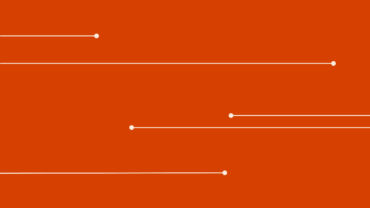How an automated indirect tax technology can make a significant impact on the organization’s invoice accuracy, the tax department’s efficiency, and overall profitability.
Jump to:
| Reasons to invest in automated IDT software |
| How do you quantify the benefits of indirect tax technology? |
| Forrester data shows cost savings and ROI |
| Additional business benefits from indirect tax software |
Reasons to invest in automated IDT software
Corporate tax departments understand the value of an automated indirect tax software. The main benefits are:
1—It will save money by:
- reducing tax errors and over-payments
- making the department’s overall operations more efficient
- reducing IT maintenance costs and reliance on third-party outsourcing
2—It will protect the organization against:
- fines and penalties for being out of compliance
- the reputational risks of being penalized or sanctioned
- errors and violations associated with out-of-date tax rates and codes
3—It will save time, allowing tax teams to:
- conduct more forward-looking forms of data analysis
- contribute more strategic and meaningful business intelligence
- ensure that reporting deadlines are never missed
4—It will make the organization more competitive by:
- facilitating smarter and more strategic decision-making
- introducing multiple workflows and process efficiencies
- enabling easier technology transitions during mergers and acquisitions
In order to make the pitch for an automated indirect tax technology, tax departments often need data supporting the business benefits.
How do you quantify the benefits of indirect tax technology?
Decision-makers want to know how the promised efficiencies and benefits will be achieved, and what the timeline for profitability will look like after the initial tax technology investment.
In order to help corporate tax teams illustrate the potential cost savings and business advantages for their organization, Thomson Reuters commissioned an independent research study from Forrester Consulting on the cost savings and business benefits of ONESOURCE Indirect Tax, the cloud-based tax engine from Thomson Reuters.
Forrester conducted extensive interviews with seven ONESOURCE Indirect Tax customers, then aggregated the results into a “composite organization” to illustrate its findings. Every company is different, of course, but for the sake of comparison, Forrester’s “composite” corporation is a multinational corporation that sells products and services in 70 countries, generates $5 billion in revenue, and has 28,000 employees.
Forrester found that over the course of three years, this composite organization experienced benefits of $3.8 million against an implementation cost of $1.7 million, resulting in a return on investment (ROI) of 120% and a net present value of $2.1 million. Furthermore, Forrester Consulting found that the ONESOURCE indirect tax system, after which the gains accumulate accordingly.
Forrester data shows cost savings and ROI
1—Improved accuracy
Tax automation significantly reduces invoice error rates, as well as the amount of time required to correct errors. For example, in Forrester’s research, the composite organization had an error rate of 3% using legacy systems. After implementation of ONESOURCE Indirect Tax, the error rate fell to well below 1%, resulting in savings of $2.6 million over three years. All of ONESOURCE’s indirect tax rates are continuously updated and calculated automatically.
2—Improved efficiency
A centralized, cloud-based, global solution provides efficiencies by giving tax teams a single platform to track and manage their work. In addition, the single platform simplifies workflows, facilitates smoother inter-departmental communications, and makes numerous everyday processes less time-consuming.
For example, Forrester Consulting’s research found that a cloud-based solution can reduce the workload of compliance teams by approximately 50% by introducing process efficiencies and by utilizing such capabilities as built-in reporting and automated certificate management. Indirect tax teams can realize a similar workload reduction through the more efficient handling of everyday tasks such as pulling reports, working with auditors, and filing taxes.
In the composite organization from the Forrester study, efficiency gains for the compliance and tax teams resulted in savings of $493.8K and $468.1K respectively. In each case, the time savings enabled three full-time employees from each team to reallocate their time to higher-value tasks such as forward-looking data analysis, risk management, and strategic intelligence.
3—Less maintenance and hassle
On legacy systems, keeping track of tax rate and regulatory code changes in multiple countries is time-consuming work typically handled by IT teams. If manual entry is involved, errors can easily creep in, resulting in over- or under-payments, compliance violations, and potential fines or other penalties.
ONESOURCE Indirect Tax solves this problem by tracking global rate and code changes and implementing them automatically, thereby improving accuracy and eliminating the need for IT personnel to monitor and update the system. For the composite company, Forrester estimated that 4,800 hours in years 1, 2, and 3 were saved resulting in savings in IT support costs and maintenance of $297.1K.
Add it all up, and you have:
- Total benefits over three years: $3.8 million
- Total costs for implementation, licensing, maintenance, and training: $1.7 million
- Net Present Value: $2.1 million
- ROI: 120%
See how you may benefit from an automated sales, use, and global tax solution with our savings calculator.
Additional business benefits from indirect tax software
When making the final pitch for a tax automation system, remember also that tax automation offers other benefits that may be more difficult to quantify, but are extremely valuable nonetheless. In Forrester Consulting’s research, the tax teams studied cited numerous such benefits, due mainly to the accuracy and reliability of the ONESOURCE Indirect Tax system overall.
Among those benefits were:
- Reduced time to value when introducing products/services to new markets
- Improved up time and reliability compared to legacy systems
- Smoother technology transitions during M&A activity
- Reduced costs related to legacy tax solutions (computers, licenses, etc.)
- Peace of mind knowing calculations are accurate and no longer subject to human error
For a more in-depth look at Forrester Consulting’s independent research on the costs and benefits of ONESOURCE IDT’s tax automation platform, download the full study.
BlogBenefits and savings with an automated indirect tax software. |
 |
 |
BlogImplementation cost, ROI, and cost savings from indirect tax technology investment. |
 |
|











